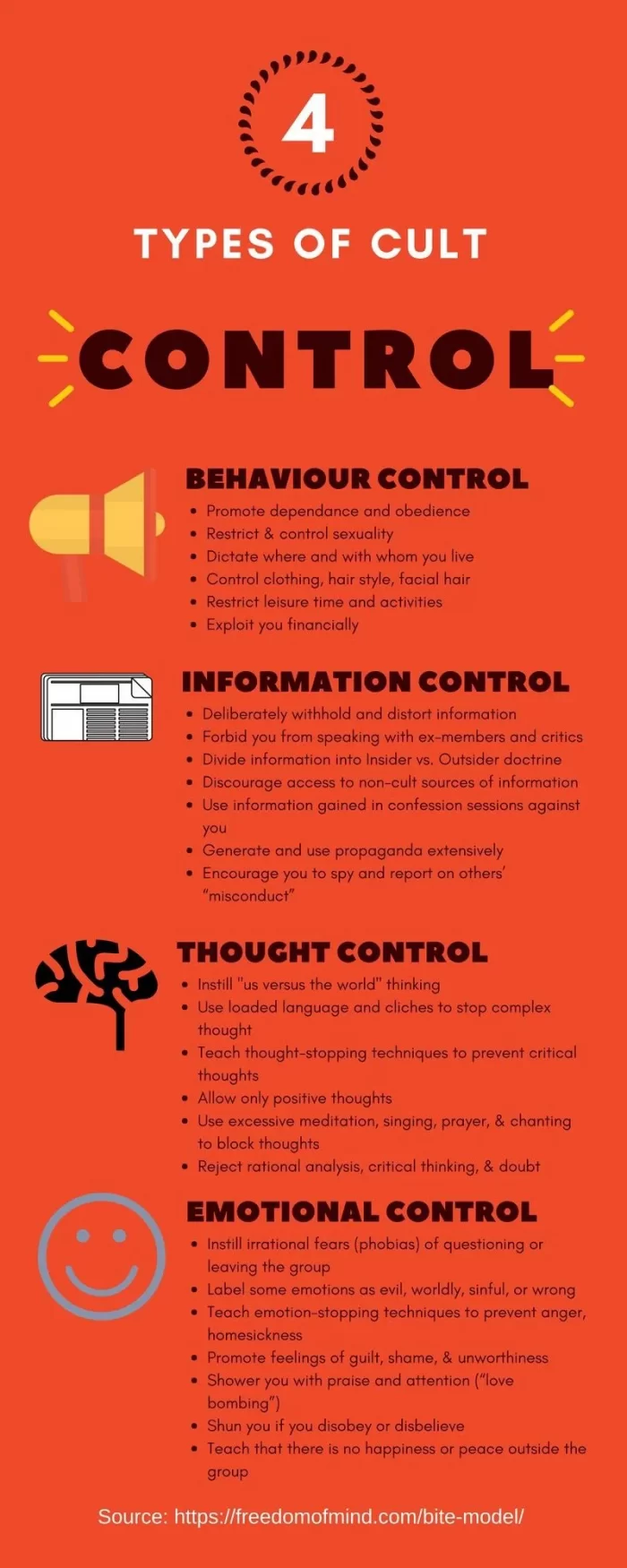
If you’ve ever been the victim of mind control or have spent some time in a cult, then you already know that there are many different ways that groups can take over your mind. In this article, we’re going to break down the four main types of control used by destructive groups and why they’re effective.
Behavior Control
Behavior control is about controlling the way people act. It’s used to make sure that members follow the group’s rules, and it can also be used to make sure that members are doing what they are told to do. Behavior control may be achieved through:
- isolation from outside influences (for example, by limiting contact with family and friends)
- punishment for disobedience (for example, through physical violence or humiliation)
- rewards for compliance with group norms (for example, praise or special privileges)
Information Control
The most common method of controlling the information that members are exposed to is through censorship of the media. If you think about it, this makes sense: if you’re trying to indoctrinate someone with your beliefs and keep them from questioning what’s going on around them, it helps if you can control what they see or hear. Censorship isn’t always as obvious as just outright banning books or movies; sometimes it’s more subtle than that–for example, when a member is told not to watch certain TV shows because they’re “bad” or “unhealthy.” The same goes for newscasts and newspapers: there may be stories critical of the group (or even just things like polls showing that most people disagree with its views), which members aren’t allowed access too because they might make us question our faithfulness or commitment.
Thought Control
The group may use thought-stopping techniques, such as chanting or prayer. In this way, they can prevent the members from thinking independently and logically. In addition to these methods, cults also use guilt and fear to control the thoughts of their members. For example, if a member doesn’t conform to group standards, she might be told that she is hurting other people’s feelings or damaging the reputation of the group as a whole (even though she hasn’t actually done anything wrong). Finally–and perhaps most importantly–many cults engage in information control by preventing their followers from accessing outside sources of information that could help them think critically about what’s going on inside the organization itself.
Emotional Control
Emotional control is the most powerful form of control. Emotional manipulation involves the manipulation of a person’s feelings and emotions in order to break down their sense of self, make them dependent on the group, and keep them from leaving it. It can take many forms: gaslighting (making someone feel crazy), love bombing (giving excessive praise), guilt tripping (making someone feel guilty) or thought reform (the process by which people are forced into changing their values).
After reading this article, you will understand the different types of cult control methods used by destructive groups and why each method is effective. I hope that this article has helped you understand the different types of cult control methods used by destructive groups and why each method is effective. If you are concerned about someone’s involvement with an organization, it may be best to approach them in a nonjudgmental way and ask if they feel like something is wrong or out of place.
